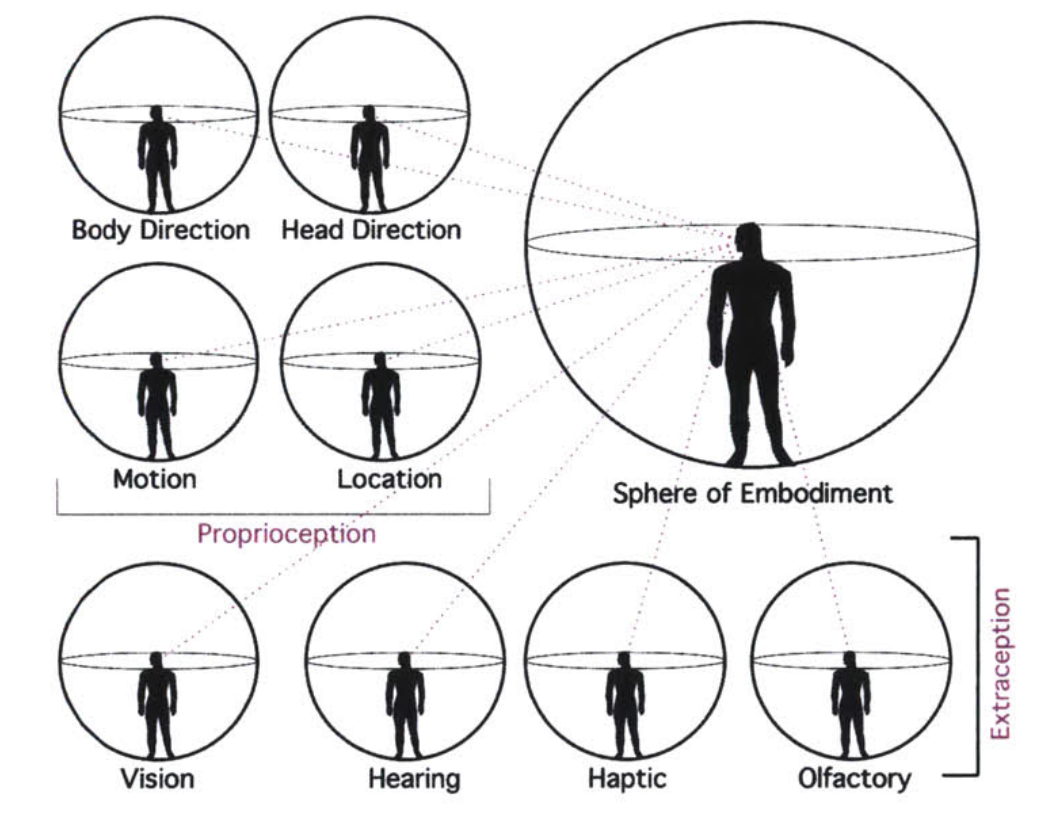Being the body: A computational approach to human experience of space
In collaboration with Terry Knight and Patrick H. Winston
International Conference on Spatial Cognition (ICSC 2015)
Background: Understanding the human experience of space is an important inquiry in a broad range of scholarly disciplines where humans are the subject of study, whether as biological, social, or cognitive entities. The human body plays a central role in this challenge both in terms of biological complexity of human cognitive apparatus and the diversity of environmental, cultural and social contexts it is situated.
Aims: Building upon a cross-disciplinary literature review on the evolution of body-centric approaches we aim at developing a computational model of spatial experience that accounts space-sense as an independent component of perception that allows emergence of multi sensory contingencies and provides a common medium of representation for actions and senses. We hypothesize that space —as a sensory modality, unifies and organizes otherwise disperse sensory stimuli, and thus must be utilized as the main driver of such computational model.
Method: We developed a body-centric computational model that integrates sensory data captured from a wearable device worn by human subjects into a spatio-temporal representation. Through a set of experiments we explore the potentials of this representation detecting multi-sensory action patterns, localization of the subject in a given environment and transformation of allocentric and egocentric sensory cues.
Results: Our experiments provide empirical evidence to our initial hypothesis that the spatial sense works as unifying component of perception. Using spatial sound recordings and eye trackers we have demonstrated how space can be attended in a multimodal way as well as how the perception of it altered based on sensory inputs.
Conclusions: Provided model opens up a way of representing the actions and perceptions in the same medium. We had a chance to observe diverse actions performed by subjects, which provided a rich contextual background to our experiments. Using body-centric temporal representations, we discovered the dynamics b




